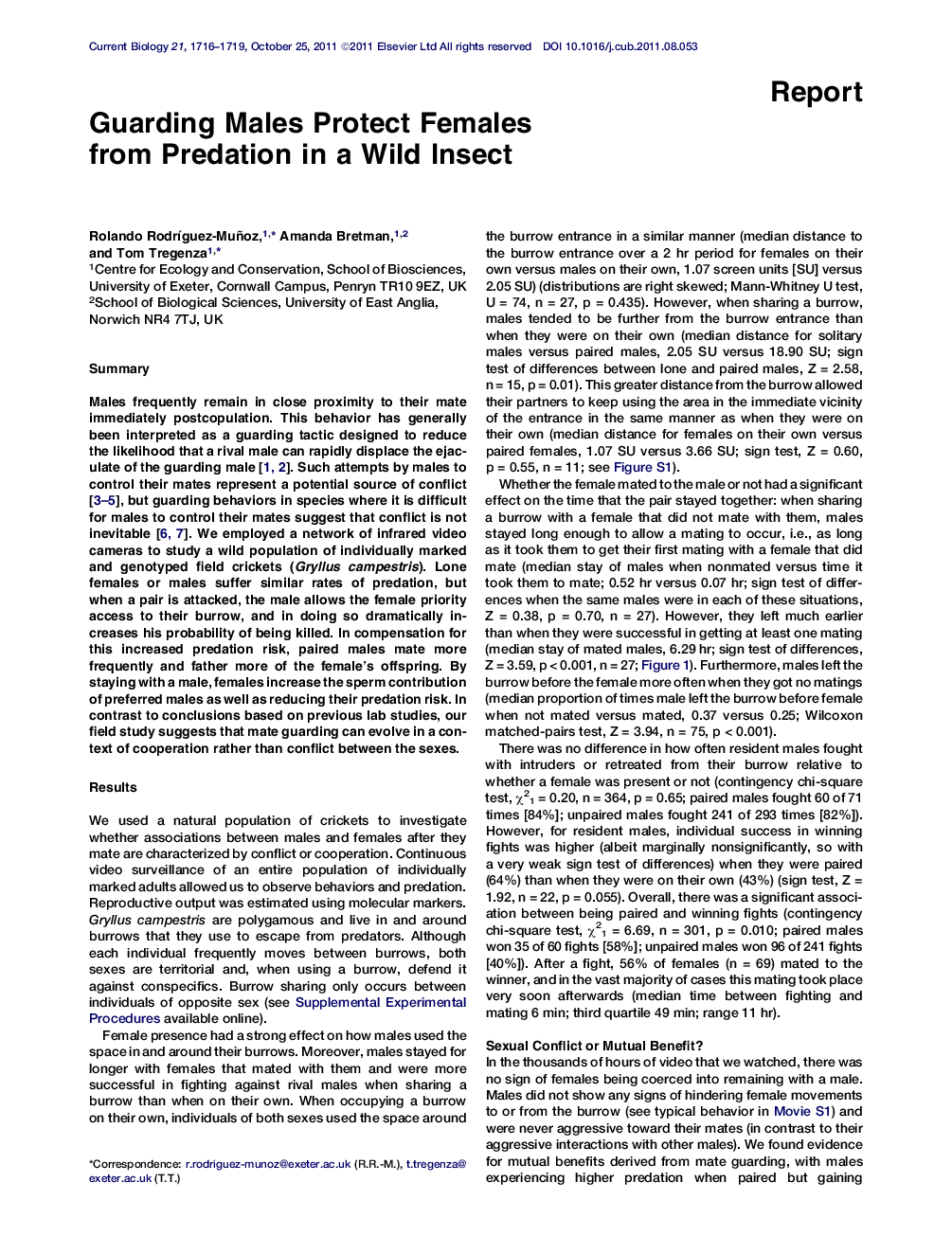| کد مقاله | کد نشریه | سال انتشار | مقاله انگلیسی | نسخه تمام متن |
|---|---|---|---|---|
| 2043050 | 1073317 | 2011 | 4 صفحه PDF | دانلود رایگان |

SummaryMales frequently remain in close proximity to their mate immediately postcopulation. This behavior has generally been interpreted as a guarding tactic designed to reduce the likelihood that a rival male can rapidly displace the ejaculate of the guarding male [1 and 2]. Such attempts by males to control their mates represent a potential source of conflict [3, 4 and 5], but guarding behaviors in species where it is difficult for males to control their mates suggest that conflict is not inevitable [6 and 7]. We employed a network of infrared video cameras to study a wild population of individually marked and genotyped field crickets (Gryllus campestris). Lone females or males suffer similar rates of predation, but when a pair is attacked, the male allows the female priority access to their burrow, and in doing so dramatically increases his probability of being killed. In compensation for this increased predation risk, paired males mate more frequently and father more of the female's offspring. By staying with a male, females increase the sperm contribution of preferred males as well as reducing their predation risk. In contrast to conclusions based on previous lab studies, our field study suggests that mate guarding can evolve in a context of cooperation rather than conflict between the sexes.Video Abstract To view the video inline, enable JavaScript on your browser. However, you can download and view the video by clicking on the icon belowHelp with MP4 filesOptionsDownload video (24228 K)
► Guarding males sire more of their mate's offspring, at a cost of reduced life span
► Females benefit from being guarded by dramatically reducing their predation risk
► Mate guarding can evolve through cooperation between sexes rather than conflict
Journal: - Volume 21, Issue 20, 25 October 2011, Pages 1716–1719